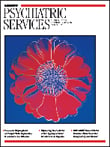Assessment, Treatment, and Prevention of Suicidal Behavior
Edited by two distinguished suicide scholars, Assessment, Treatment, and Prevention of Suicidal Behavior is a well-referenced and comprehensive book about the assessment of and psychotherapeutic approaches to the individual at risk for suicide. I found the title, though, to be somewhat misleading, because it is too broad for the book's content, which is focused on intervention and not prevention. Intervention is the domain of the clinician, and prevention is the domain of public health systems ( 1 ). In an era of psychopharmacology, it is certainly useful to have a book devoted to various psychotherapeutic approaches to the suicidal patient. As indicated by the American Psychiatric Association (APA) practice guideline on suicide ( 2 ), such interventions are a valuable component to a comprehensive treatment, having the potential to reduce the symptoms of psychiatric disorders that are often associated with suicidal behavior.
For the clinician who wants to learn about various psychotherapeutic approaches, this book is useful. At the same time, it is important for clinicians to understand that recommendations come from case studies instead of controlled studies. Additionally, in terms of the treatment of suicidal behavior, it is important to acknowledge that combination treatment—psychotherapy and pharmacotherapy—is usually necessary. However, these issues should not detract from the usefulness of the approaches and vignettes referred to in the book, because psychotherapy is certainly one of the linchpins in the treatment of the suicidal person.
The chapter on no-suicide contracts is particularly helpful because it places no-suicide contracts into a useful clinical perspective, including appropriate limitations on their use. The APA practice guideline on suicide does not recommend suicide scales for routine clinical use, because of the large number of false positives and the unacceptable number of false negatives. In addition, the APA guideline directly states that such scales "lack the predictive validity necessary for use in routine clinical practice. Therefore, suicide assessment scales may be used as aids to suicide assessment but should not be used as predictive instruments or as substitutes for a thorough clinical evaluation" ( 2 ). However, clinicians should be familiar with suicide scales because they provide insight into a variety of questions that can be used when conducting a suicide inquiry.
I recommend this book for therapists working with suicidal patients, but the buyer is advised to review the back jacket of the book as opposed to the title, which is more reflective of its contents.
1. National Strategy for Suicide Prevention. Available at www.mentalheatlh.samhsa.gov/suicideprevention/strategy.aspGoogle Scholar
2. American Psychiatric Association: Practice guideline for the assessment and treatment of patients with suicidal behaviors. American Journal of Psychiatry 160(Nov suppl): 1-60, 2003Google Scholar



